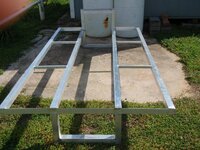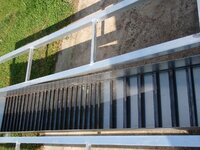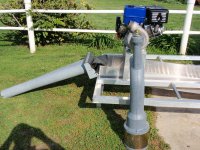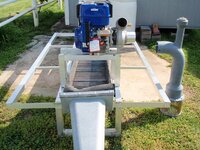jaguargene
Jr. Member
- Feb 8, 2011
- 59
- 1
Here's my 4 inch dredge project.It has a keene p350 3X4 pump with a 450 gph and a 11hp engine.It's 8 feet long sluice,alum 2X2 frame welded nice.I still need a jet, air compressor matting and plates.I plan on using two 55 gal plastic drums up front and two 35 plastic drums in the back.Here's the size of the riffles
3/8 inchs high X 15 1/4 inchs wide X 24 inchs long X 1 1/2 inchs space between them
3/4 inchs high X 15 1/4 inchs wide X 24 inchs long X 2 1/2 inchs space between them
1 1/4 inchs high X X 15 1/4 inchs wide X 36 inchs long X 4 1/2 inchs space between them
Any ideals ?
3/8 inchs high X 15 1/4 inchs wide X 24 inchs long X 1 1/2 inchs space between them
3/4 inchs high X 15 1/4 inchs wide X 24 inchs long X 2 1/2 inchs space between them
1 1/4 inchs high X X 15 1/4 inchs wide X 36 inchs long X 4 1/2 inchs space between them
Any ideals ?









